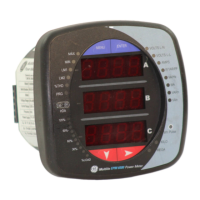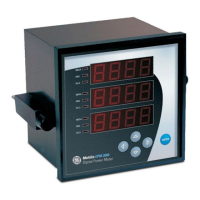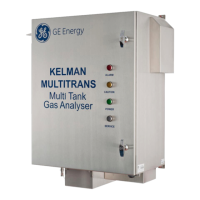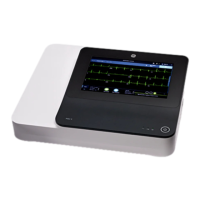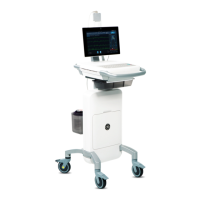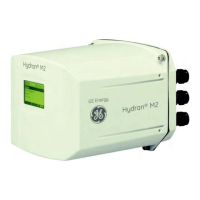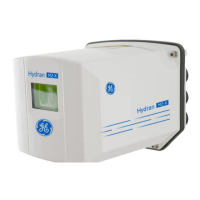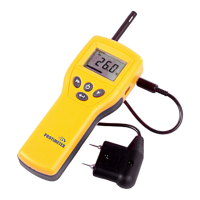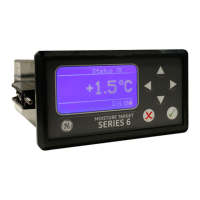4–22 PQM POWER QUALITY METER – INSTRUCTION MANUAL
S2 SYSTEM SETUP CHAPTER 4: PROGRAMMING
If A AND B ONLY, A AND C ONLY, or A ONLY connection is selected, the
neutral sensing must be accomplished with a separate CT.
• PHASE CT PRIMARY: Enter the primary current rating of the phase current
transformers. All three phase CTs must have the same rating. For example, if 500:5 CTs
are used, the
PHASE CT PRIMARY value is entered as 500. The PHASE CT PRIMARY
factory default is OFF. While set to OFF, the PQM is forced to an alarm state as a safety
precaution until a valid CT value is entered. Ensure that the CT is connected to the
correct 1 A or 5 A terminals to match the CT secondary.
• NEUTRAL CURRENT SENSING: Neutral current sensing can be accomplished by using
a separate external CT connection or by calculations. Select SEPARATE CT when using
an external CT. If CALCULATED is selected, the PQM calculates the neutral current
using the vector sum of I
a
+ I
b
+ I
c
= I
n
. If a residual connection is required using the
PQM internal CT, the neutral CT primary must be the same as the phase CT primary to
ensure correct readings.
• NEUTRAL CT PRIMARY: This message is visible only if the
NEUTRAL CURRENT
SENSING
setpoint is set to SEPARATE CT. Enter the CT primary current. For example, if
a 50:5 CT is installed for neutral sensing enter
50. One amp CTs can also be used for
neutral sensing.
• VT WIRING: Enter the VT connection of the system in this setpoint. The three possible
selections are Wye, Delta and Single Phase.
If the system to be measured is a Wye connection, the selections are 4 WIRE WYE
DIRECT, 4 WIRE WYE (3 VTs), and 4 WIRE WYE (2 VTs). The 4 WIRE WYE DIRECT value is
used for systems that are 600 V or less and directly connected to the PQM. The
VT
NOMINAL SECONDARY VOLTAGE
setpoint is replaced by NOMINAL DIRECT INPUT
VOLTAGE
. With external VTs (depending upon how many external VTs are used) 4
WIRE WYE (3 VTs) or 4 WIRE WYE (2 VTs) must be selected. Note that when using the 4
WIRE WYE (2 VTs) value, only two voltages are measured; the third voltage is
calculated on the assumption that V
an
+ V
bn
+ V
cn
= 0. This assumption is valid only for
balanced system voltages.
If the system to be measured is a Delta connection, the values are 3 WIRE DIRECT and
3 WIRE DELTA (2 VTs). The 3 WIRE DIRECT value should be used for systems that are
600 V or less and directly connected to the PQM. With external VTs, 3 WIRE DELTA (2
VTs) must be selected.
The PQM accepts input voltages from 0 to 600 V AC between any two of the voltage
terminals (V
1
, V
2
, V
3
, and V
n
). These inputs can be directly connected or supplied via
external VTs. External VTs are required for input voltages greater than 600 V AC (line-
to-line). When measuring line-to-line quantities using inputs V
1
, V
2
and V
3
, ensure that
the voltage common input V
n
is grounded. This input is used as a reference for
measuring the voltage inputs.
All connections to the PQM voltage inputs should be connected using HRC
fuses rated at 2 amps to ensure adequate interrupting capacity.
• VT RATIO: Enter the voltage transformer ratio. All three voltage inputs must be of the
same rating. For example, if 4200:120 VTs are used, the
VT RATIO should be 4200 /
NOTE
NOTE
Courtesy of NationalSwitchgear.com
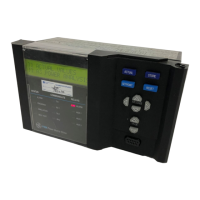
